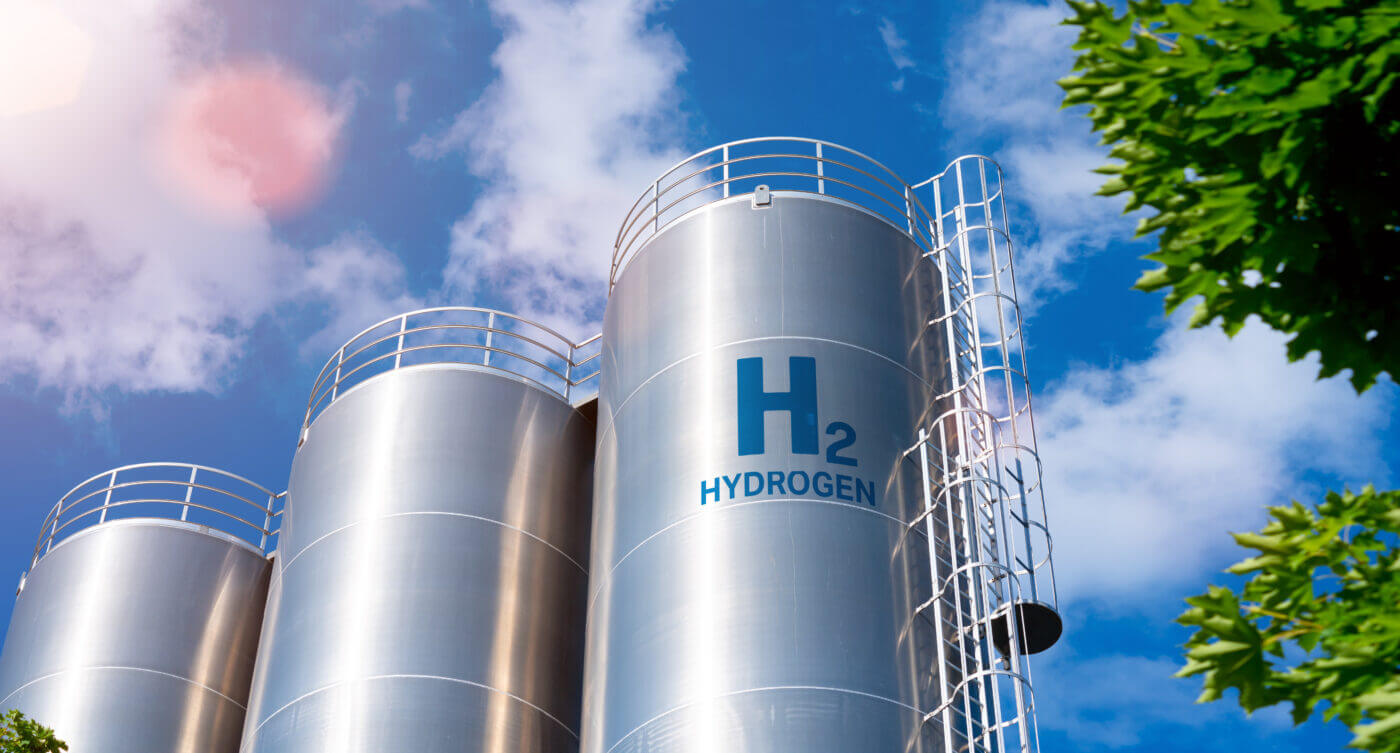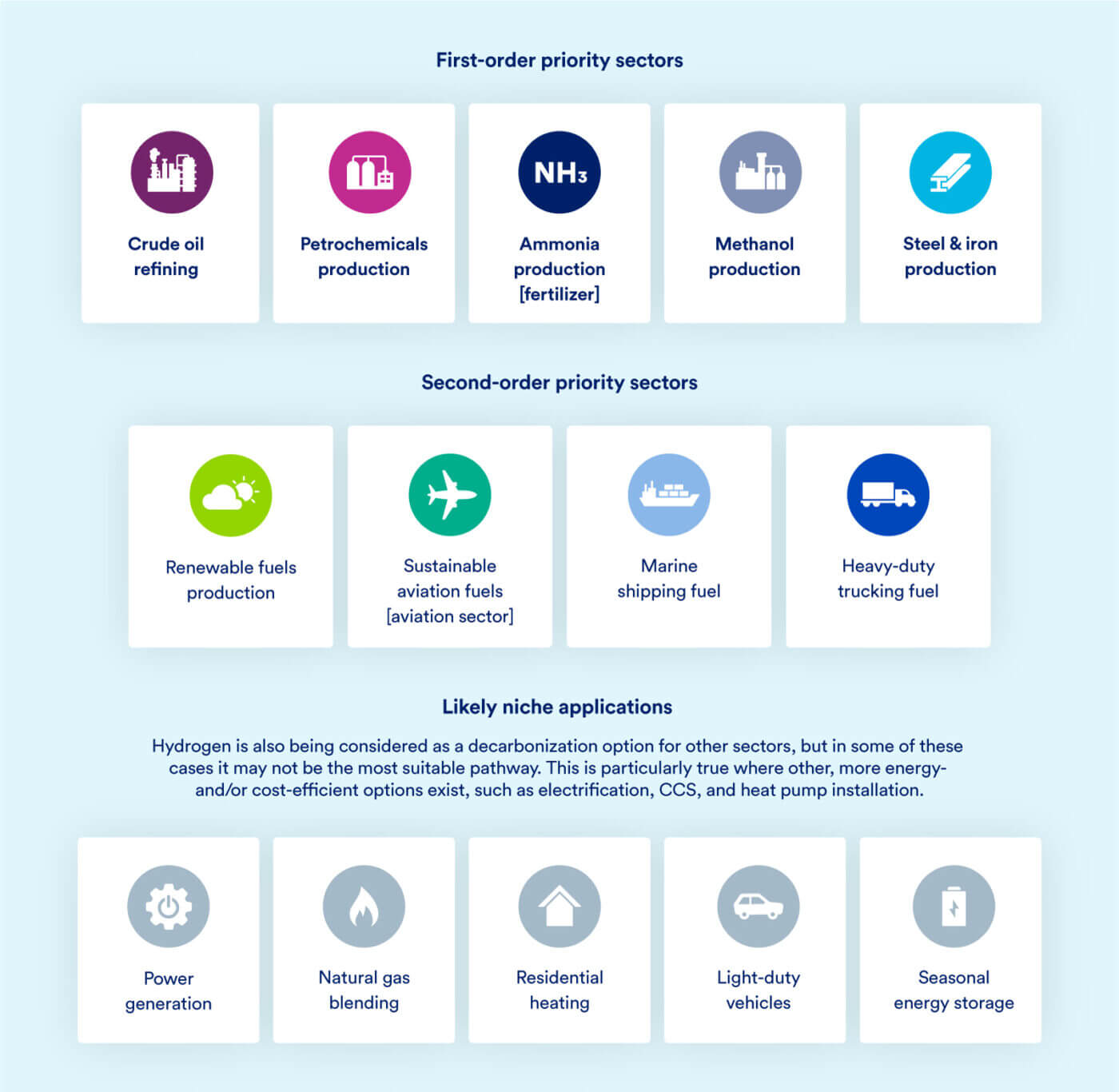
Moving from application to action: Priority focus areas for DOE’s Regional Clean Hydrogen Hubs
Last Updated: October 23, 2023
Last week, the U.S. Department of Energy (DOE) took an important step forward in accelerating clean hydrogen production by announcing its initial Regional Clean Hydrogen Hubs selections. The program, which was included in the bipartisan Infrastructure Investment and Jobs Act, represents a massive opportunity for the U.S. to establish itself as a leader in global clean hydrogen development, creating new jobs and benefits in a diverse range of regions across the country.
The seven announced hubs are tracked on CATF’s Hydrogen Hubs Map and span the following 18 states: California, Delaware, Illinois, Indiana, Louisiana, Michigan, Minnesota, Montana, North Dakota, New Jersey, Ohio, Oregon, Pennsylvania, South Dakota, Texas, Washington, Wisconsin, and West Virginia. While project specifics may shift in the award negotiations phase, DOE’s initial selections include seven hubs that will demonstrate renewable-based production, five that will demonstrate fossil-based production with carbon capture (which should also include strict upstream methane emissions control to be climate beneficial), and three that will demonstrate nuclear-based production. The selected applicants intend to focus on deploying hydrogen in a wide range of end-use sectors (as required by law), such as heavy transportation applications and decarbonizing ammonia production for fertilizers.
CATF hopes to see DOE and hubs collaborating to prioritize clean hydrogen for sectors where it will deliver significant climate benefits—first in sectors where hydrogen is indispensable, followed by additional sectors that lack other energy-efficient or cost-effective decarbonization options—particularly through implementation of the recently announced $1 billion for a hydrogen demand-side initiative to accompany the hydrogen hubs.

Potential climate and community benefits from hydrogen hubs
Establishing the hydrogen hubs program was a historic first step. Now it’s time for the hubs to be thoughtfully designed and developed so climate and community benefits are maximized. Clean Air Task Force hopes to see hydrogen hubs deliver several benefits, including:
- Decarbonization of hard-to-electrify end-use sectors and existing hydrogen use cases: The hydrogen hubs program will play an important role in creating cost-effective decarbonization options for hard-to-abate sectors including heavy-duty trucking, shipping, aviation, and heavy industry in the United States. The program will also help catalyze the decarbonization of traditional high carbon intensity hydrogen used for ammonia production for fertilizers and oil refining, which are linked to more than 900 million metric tons of carbon dioxide emissions globally each year.
- Lower domestic clean hydrogen production costs: The hydrogen hubs program, coupled with the 45V clean hydrogen tax credit included in the Inflation Reduction Act, will help accelerate the clean hydrogen market by making production more cost-effective and providing significant incentives for project developers—which will, in turn, benefit the sectors where hydrogen is indispensable for decarbonizing but is currently more expensive than incumbent fuels.
- Build-out of connective infrastructure: The hubs program has the potential to spur the creation of hydrogen and ammonia-fueled transportation corridors that connect between hubs, which can strengthen the economics for individual hubs and foster a build-out of a global clean hydrogen network. Read more on the benefits of hubs and transportation corridors here.
- New jobs and community benefits: The development of hubs has the potential to create new jobs and workforce development opportunities within communities. Hubs have the opportunity to partner with local unions, vocational schools, and apprenticeship programs as they develop. Hubs can also engage in thoughtful processes with communities and community-based organizations to ensure that community concerns are addressed and that community benefits are based on direct input from communities.
CATF’s vision for hydrogen hubs implementation
Clean Air Task Force has engaged with 20+ hydrogen hub applicants and intends to continue engaging with DOE, hubs, regional and local governments, and community-based organizations with the goal of ensuring that the selected projects drive real climate and community benefits. Specifically, CATF’s priorities for hubs include:
- Ensuring robust life cycle analyses and low carbon production pathways
- Directing hydrogen towards high-priority end uses
- Maximizing community and environmental benefits
Now that initial selections have been announced, CATF sees four priority areas of focus for hub developers and DOE to ensure the selected projects are implemented in a way that maximizes climate and community benefit:
- Need for greater transparency: Until this point, applicants have been hesitant to release project-specific information due to the uncertain and competitive nature of the application process. Although negotiations will likely continue through the end of the year, the announcement of selections creates an opportunity for DOE and hub developers to reassess their approach to transparency and consider sharing greater details of their intended plans publicly. This could have several benefits, including trust-building with communities and creating opportunities for shared learning among hubs.
- Increased coordination: With selections announced, the door has been opened significantly for DOE and hubs to start thinking about coordination on several fronts:
- DOE and hubs should consider how to harmonize Regional Clean Hydrogen Hubs funding with other related funding programs including the DOT’s Clean Corridors Program, FECM’s Pipeline Infrastructure Grant Program, EPA’s Climate Pollution Reduction grants, FAA’s Sustainable Aviation Fuels program, DOE’s Direct Air Capture program, and FHWA’s Charging and Fueling Infrastructure Discretionary Grant Program.
- DOE and hubs should consider how best to coordinate with each other on shared infrastructure, best practices, and clean transportation corridors that may connect hub regions.
- DOE, hubs, and non-selected hubs applicants should consider how best to coordinate with projects that will continue without DOE funding – particularly where projects could be folded in to selected hub proposals.
- Deeper engagement between communities and hubs: As hubs move through award negotiations and begin to release details on specific project development partners and prospective project sites, hubs and DOE should meaningfully engage with impacted communities as early as possible to better understand and address community concerns. DOE and hub developers should ensure that impacted communities have adequate time, resources, and opportunity to directly give input on the types of benefits they would like to see created in their respective communities.
- Soliciting third-party technical expertise: Additionally, hubs should consider developing new structures and advisory bodies to source wisdom from a wide array of third-party environmental and climate technical experts including nonprofits, research organizations, and academic institutions. Seeking this expertise can help ensure the projects maximize climate, environmental, and community benefits.
Looking ahead, CATF expects to see the award negotiation phase last into early- to mid-2024, and we hope to see this process create opportunities for community input to inform the community benefits portions of the applications. Through this next phase, CATF will continue to engage deeply at the regional level and with DOE to ensure the program maximizes climate and community benefits, as well as to be a source of information on hub related developments for diverse stakeholders including hub developers, community-based organizations and local, regional, and state-level policy makers.
For questions, please reach out to CATF’s team of hubs experts for more information:
- Appalachia & Mid-Atlantic: Sam Bailey, Appalachia Regional Hubs Manager ([email protected])
- Gulf Coast: Mathew Holland, Gulf Coast Regional Hubs Manager ([email protected])
- Midwest: Ian Champ, Midwest Regional Hubs Manager ([email protected])
- West: Maggie Field, Western Regional Hubs Manager ([email protected])
- General inquires: Anna Menke, Senior Hydrogen Hubs Manager ([email protected])



